Elland Road
| Capacity | 37 608 |
|---|---|
| 1388 (Business seats) | |
| Country | England |
| City | Leeds |
| Clubs | Leeds United FC |
| Inauguration | 1898 |
| Record attendance | 57 892 (Leeds United – Sunderland, rematch of FA cup's 5th round game, 15.03.1967) |
| Address | Elland Road, Leeds LS11 OES |
Advertisement
Elland Road – stadium description
What were the origins of the stadium on Elland Road in Leeds?
The history of the stadium on Elland Road is linked to the nearby pub, The Old Peacock, which stands opposite the south-east corner of the venue. This pub has been in operation since 1826 (the current building was constructed in 1963). In 1878 the new owner of the pub, Bentleys Brewery, levelled the meadow opposite and laid out a playing field, later known as The Old Peacock Ground. The pitch was used privately, by the pub, and was also used by rugby players from Leeds Athletic Rugby Football Club. In 1897 the ground was purchased by Holbeck Rugby Club for the sum of £1100, on the condition that its sporting character was maintained for at least 7 years and that the brewery retained its catering rights.
Holbeck Rugby Club built a stand adjacent to the pitch, which was ready by the 1898/99 season. The new stadium soon became known as Elland Road (after the street next to it). In the early years, the venue was mainly used for rugby, although it also played host to football matches, including Leeds Woodville in the 1902/03 season. In 1904, Holbeck Rugby Club ceased to exist after losing the play-offs for promotion to the First Division.
In August 1904 a meeting was held to discuss the future of the stadium. It was agreed that it would be used for the newly formed Leeds City FC football club. On October 13, 1904, a lease was signed for £75 a year, with an option to buy the facility for £5,000. Just two days after signing the agreement, the club played their first match at the stadium, losing 0:2 in a friendly against Hull City. The club eventually bought the facility for £4500.
In 1905, at a cost of £1050, the team built a new main stand on the west side, capable of holding 5,000 spectators. The pitch was turned 90 degrees and the existing main stand, located on the south side along Elland Road, was now behind one of the goals. In 1906 Leeds City FC bought additional land on the north side of the pitch where, at a cost of £3,000, a new stand was built. The wide, terraced stands on the north and east sides gave the stadium quite a high capacity; in 1910 an FA Cup semi-final between Barnsley and Everton was held here, watched by 36,000 spectators.
What was the fortunes of Elland Road between the wars?
During the First World War the venue was used as a site for military parades and for shooting practice. After the war, Leeds City were accused of financial irregularities, including paying then illegal wages to footballers, leading to the suspension of the team and its dismantling in 1919. Plans were then put in place to build a brickworks on the site to take advantage of the clay deposits beneath the stadium. However, the site was briefly leased by the Yorkshire Amateur club, which saved the stadium from liquidation. Leeds City FC were soon replaced by Leeds United FC, who became the new hosts of the venue.
In the early 1920s, the south stand was upgraded with a new wooden barrel-shaped roof. This became known as the 'Scratching Shed'. In the late 1920s and early 1930s, the east stand, known as The Lowfields, was extended and partially roofed. The terraced stand behind the north goal was nicknamed Spion Kop (or Kop), after the hill in South Africa where many British soldiers fell in the battle against the Boers in January 1900. On December 27, 1932, 56,796 spectators attended the match against Arsenal, an attendance record that was not broken for another 35 years.
In 1927 two other stadiums were built next to Elland Road. Behind the east stand, a facility was established primarily for motorbike racing, known as Fullerton Park. On the other side of the road, a greyhound stadium was built and remained in use until 1982. A new police station was opened in its place in 2014.
What is the history of Elland Road after the Second World War?
During the Second World War the stadium premises were adapted for use by the military administration. On November 9, 1953, on the occasion of the match against Scottish Hibernian (4:1), floodlights were inaugurated at the stadium. On September 18, 1956, the west stand of the stadium burnt down in a fire, along with offices, locker rooms and floodlight generators. The damages were estimated at £100,000. The club received compensation but this proved insufficient to rebuild the burned stand, but thanks in part to a public collection which raised £60,000, a new west stand was erected for a sum of £180,000 and opened at the start of the following season.
On March 15, 1967, the stadium's later unbeaten attendance record was set. The FA Cup match against Sunderland (1:1) was watched from the stands by 57,892 spectators. During the game, one of the barriers in the stand near the south-east corner collapsed, leaving 32 people injured.
In April 1968 the terraced north stand (Spion Kop) was demolished and replaced in less than six weeks by a new covered stand known as the Gelderd End. The cost of building the new stand was £250,000. The first rows of the new stand were placed slightly to the north of the previous one, allowing the pitch to be moved more than 9m in that direction, thus enabling a larger south stand to be built in the future. In 1970 the north-west corner was built and shortly afterwards also the north-east corner. In 1971 a grass heating system was installed.
In 1974 a completely new south stand was built at a cost of £500,000. The lower stand had 4000 standing places and the upper stand had 3500 seats and boxes. In the same year, a new floodlighting system was commissioned, based on the highest floodlight masts in Europe (79.2 m). At first only three masts were erected, the missing fourth one, in the south-east corner, was added four years later. In 1991, the missing southeast corner was added, completing the stadium structure. In April 1992, a reception area and conference centre were opened at the rear of the west stand.
In the summer of 1992, the east stand was demolished. In its place, an even larger two-storey structure with a capacity of 17,000 was built. The stand was fully completed in January 1994 and was the largest cantilevered stand in the world at the time. Its construction cost £5.5 million. The redevelopment also saw the removal of masts in favour of floodlights mounted in the canopy.
Due to changes in legislation following the Hillsborough tragedy and the publication of the Taylor Report, in 1994 the North Stand saw the last standing seats in the stadium removed, installing nearly 7,000 seats. In the same year the stand was named after Don Revi, a former player and coach of Leeds United and the England national team.
In August 2001, club chairman Peter Ridsdale polled shareholders and season ticket holders on whether they favoured further expansion at Elland Road or a completely new stadium in the south-eastern suburb of Leeds. The vast majority of respondents (87.6%) were in favour of building a new facility. However, the club ran into financial problems in the early 2000s and the planned construction of a 50,000-seater venue, like several earlier plans to redevelop Elland Road, failed to materialise.
In 2004, following the death of former club player John Charles, the west stand of the stadium was named after him. The south stand was upgraded in 2006 and the east stand in 2011. In 2009, a LED display was also installed in the south-west corner. In April 2020, the South Stand was named after Norman Hunter, the former Leeds United player who was in England's 1966 World Cup winning team (although he did not play a single game at the tournament). In November of the same year, the East Stand was also given a patron. The patron was Jack Charlton, long-serving Leeds United player and 1966 World Cup champion, brother of the famous Bobby Charlton.
What are the future plans for Elland Road?
In April 2025, plans for the expansion of Elland Road were unveiled, which include a significant expansion of the west stand and the north stand. With the investment, the stadium's capacity will increase to about 53,000 spectators.
Who does the stadium on Elland Road serve?
In its early days (from the construction of the first stand in 1898 until 1904), the stadium was used primarily for rugby, and was hosted by Holbeck Rugby Club. In 1904 the role of host was taken over by the newly formed Leeds City FC football club. Following the club's demise in 1919, it was succeeded by Leeds United FC, who still play at Elland Road today. Between 1983 and 1995 the venue was co-hosted by rugby league team, Hunslet RLFC. The venue has also temporarily served a number of other teams, such as Huddersfield Town playing at Elland Road in 1950 after their own stadium caught fire, and Bradford City in 1985, also after their own arena caught fire.
The Leeds United footballers playing at the stadium won the English Championship three times (1969, 1974, 1992), they were also runners-up five times (1965, 1966, 1970, 1971, 1972). The best period in the club's history was in the 1960s and 1970s, as well as in the 1990s and early 2000s. The team also won the FA Cup (1972), EFL Cup (1968) and the FA Community Shield (1969, 1992). The squad also recorded outstanding performances in European cups, winning the Inter-Cities Fairs Cup twice (1968, 1971), as well as reaching the finals of Inter-Cities Fairs Cup (1967), Cup Winners' Cup (1973) and European Cup (1975).
What events does Elland Road host?
In 1996 the venue was one of the venues for the European Football Championship played in England. The tournament saw three group stage matches take place at Elland Road (all involving Spain). The England national team also made occasional appearances at the stadium. In 2015, two Rugby Union World Cup group stage matches were played at the venue. In autumn 2022, the stadium was also one of the venues for the Rugby League World Cup. Elland Road hosted the final matches of the Tri-Nations rugby league tournament in 2004 and 2005, and its successor the Four Nations in 2009 and 2011.
The stadium was touted as one of the venues for the Olympic football tournament following Manchester bid to host the 2000 Summer Olympics (eventually hosted by Sydney, Australia), as well as one of the venues for the 2018 World Cup as part of England's bid (but Russia was chosen).
Elland Road has played host to many other interesting events, for example, on July 28, 1985, it played host to a match between England and Germany featuring the players who appeared in the 1966 World Cup final (the game was played as part of a charity fundraiser for Bradford City after their stadium caught fire, and ended with a score of 6:4). On May 19, 2018 the stadium hosted an IBF featherweight world championship boxing fight (Lee Selby vs Josh Warrington, won on points by Leeds native Josh Warrington). The stadium has also hosted American football and Gaelic football competitions. It also hosts non-sporting events including concerts (Queen, U2 and Rod Steward have all performed there).
What does Elland Road look like?
The stadium has a football-specific, rectangular layout. The stands surround the pitch on all sides and are made up of two tiers. The dominant main stand on the eastern side is clearly higher than the others, with the height of its lower tier corresponding roughly with that of the other stands. With its built-up, rounded corners, the structure is a compact, enclosed architectural mass, although the stands on the north, west and south sides differ in their detailing. In the south-west corner there are only seats in the lower part, while the upper part contains a LED screen.
The stands are fully roofed and can hold 37,608 spectators. Each of the four stands has its own patron, these are: Jack Charlton (east stand), Don Revie (north stand), John Charles (west stand) and Norman Hunter (south stand). The seats in the stands are coloured blue (except in the south east corner where they are yellow). The floodlights are located in the canopy. The facility is equipped, among other things, with a heated pitch.
The stadium has two statues of former Leeds United players, Billy Bremner (at the south-east corner, unveiled in 1999) and Don Revi (opposite the east stand, unveiled in 2012). The stadium is located in the Beeston area, approximately 2 miles (3 km) south of Leeds city centre.
How Elland Road compares to other Premier League venues?
Advertisement
Pictures
-

25.06.2018 © alh1 
25.06.2018 © Andrew Stopford 
15.08.2017 © Lufc83 (Wikimedia Commons) 
14.09.2017 © Mark Lee 
2021 © Instagram: @arlow 
24.10.2018 © Ungry Young Man 
14.09.2017 © Mark Lee 
14.09.2017 © Mark Lee 
14.09.2017 © Mark Lee 
14.09.2017 © Mark Lee 
14.09.2017 © Mark Lee 
05.12.2015 © dom fellowes 
01.08.2015 © TheHuxCapacitor 
17.12.2016 © chillilogic.com 
17.12.2016 © chillilogic.com 
11.01.2019 © Jake 
17.12.2016 © chillilogic.com 
17.12.2016 © chillilogic.com
Related news
2025
-
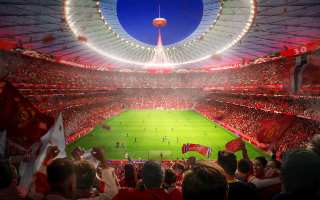
Great Britain: 2035 Women’s World Cup stadiums. New Trafford confirmed
Great Britain could host the 2035 FIFA Women’s World Cup, and today the list of stadiums that could welcome the world’s best players was revealed. England, Scotland, Wales and Northern Ireland have submitted a joint bid – the only one FIFA has received – which puts the project firmly in pole position.
-
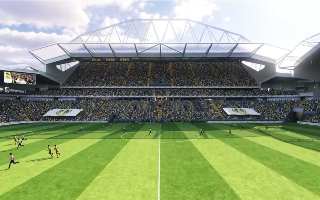
England: Leeds United stadium expansion. Work to start in May 2026?
A new era for Elland Road is on the horizon. Leeds United has officially submitted a planning application for the expansion and modernisation of their historic stadium. If approved, the venue will gain increased capacity and new modern amenities.
-
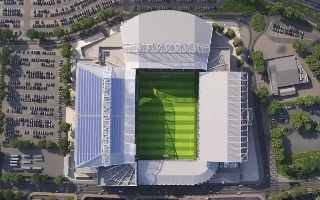
England: First renderings of redeveloped Elland Road unveiled!
Leeds United has released the first visualizations showing what Elland Road could look like if the proposed redevelopment plans are approved.
-
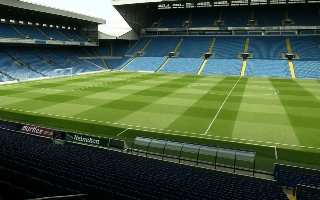
England: Elland Road expansion backed by local councillors
Plans to expand Elland Road, home of newly promoted Premier League club Leeds United, have received support from key members of the city council.
-
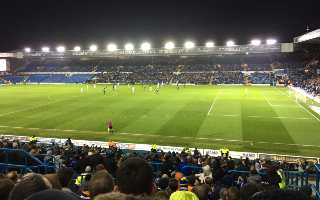
England: Elland Road set to be expanded to a capacity of 56,000 seats!
Full details of the Elland Road redevelopment project will be presented at the upcoming meeting of the Leeds City Council Executive Board on April 23.
2024
-
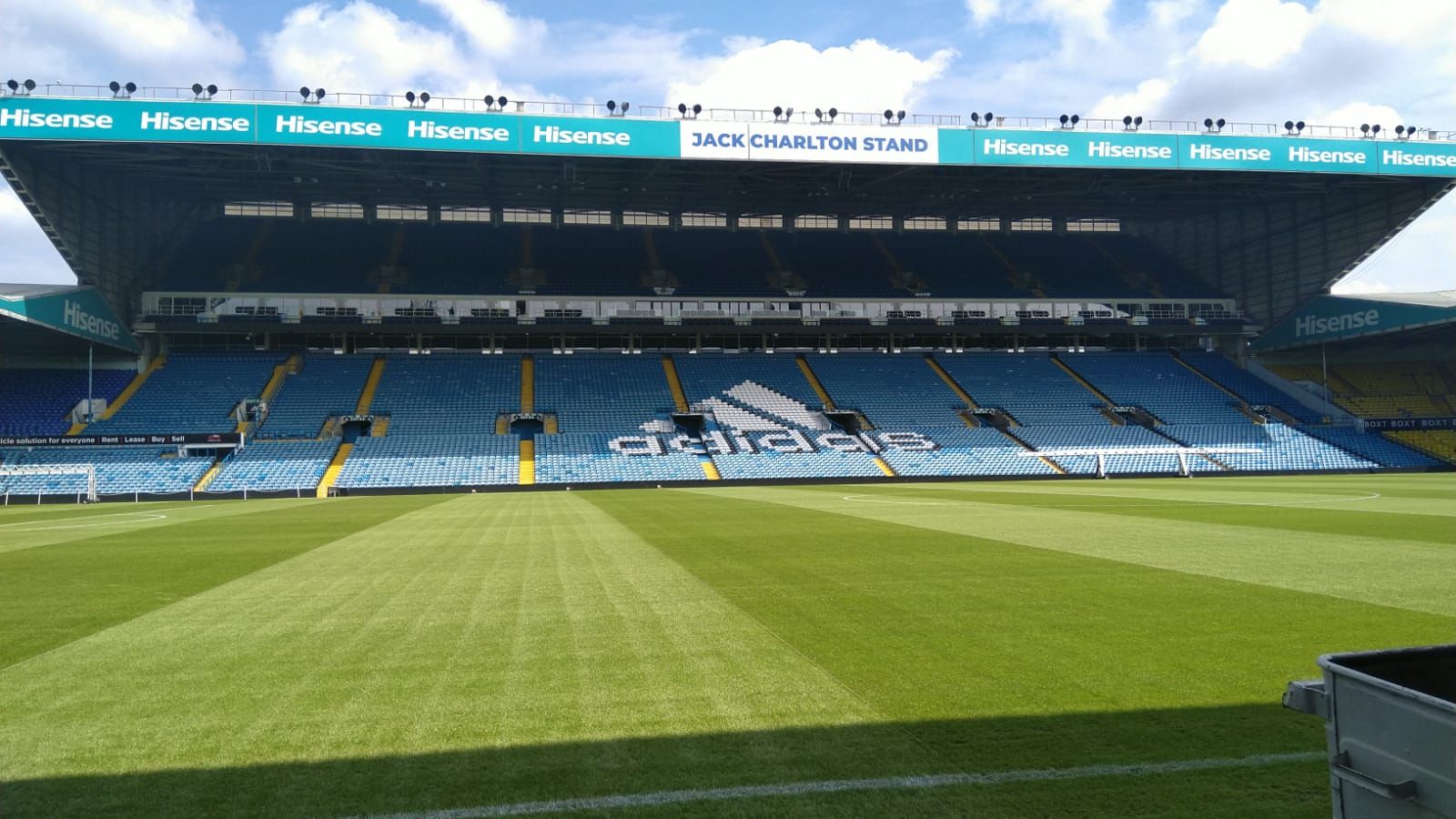
England: Elland Road to be expanded!
Plans to redevelop Leeds United’s stadium have been revealed, and according to finance expert Stefan Borson, it could become an important "event hub" for the city. The club has operated at Elland Road since 1919, and the primary goal of the modernization is to increase the capacity to around 53,000 seats.
-

England: Premier League Return Essential For Elland Road Plans
Leeds United’s plans to redevelop Elland Road were put on hold when the club were relegated from the Premier League after the 2022/23 season. With the Whites battling to return to the top flight as swiftly as possible, the West Yorkshire outfit are in need of the financial benefits that Premier League football brings, to get their plans for the expansion of Elland Road back on track.
-

England: Will Manchester United leave Old Trafford?
The Red Devils dream of a modern stadium, but due to the age of the installations and the complex surroundings, a major upgrade is not an option. The stadium will have to be built from scratch and the club will have to move out. What are its options?
2022
-

England: Stadium rises will affect Premier League clubs
The value of almost all 20 stadiums owned by teams playing in the Premier League has recently increased. As a result, clubs will face multi-million pound tax increases involving their infrastructure.
-

England: Leeds Edging Closer To Elland Road Development
Leeds United owner Andrea Radrizzani has made it clear the club would push forward with plans to expand their traditional ground after securing a third season back in the Premier League.
-

England: Meet the 2022/23 Premier League stadiums!
Much to the delight of fans, the new English Premier League season will kick off on Friday, August 5. On this occasion, we would like to introduce you to the stadiums where the footballers of the world's best league will soon be playing. Get your English tea in hand and let's get started!
-

Leeds turn to SeatGeek to streamline ticket sales
If you wish to attend a Premier League game at Elland Road then you will have to exercise the same talent as the Who Wants to Be a Millionaire contestants who play Fastest Finger First, given the unprecedented demand when they go on sale.
2021
-

England: Safe standing trials in Premier League and Championship
There has been talk for some time about introducing safe standing in the two highest leagues in the country. In 2019, the government assured about the imminent change of the regulations, but these were not introduced until 2 years later.
-

England: Will Leeds expand Elland Road to 55,000?
Premier League promotion? Done. Staying in Premier League? Done. No wonder fans are bringing up expansion of Elland Road. The iconic stadium in Leeds could grow to as many as 55,000 seats, according to Phil Hay.
-

United Kingdom: Will they bring football home in 2030 again?
Prime Minister Boris Johnson has recently supported the potential candidacy of the UK and Ireland for the FIFA 2030 World Cup. The formal process for a prospective five-association bid will be opened in 2022.
2020
-

COVID-19 crisis: English supporters to return in October?
The government is preparing to reopen sports stadiums across the UK. While first trial events will take place in just 2 weeks, all stadiums could be open again only from October onwards.
-

England: 341 games in five “regional hubs”?
In case not all stadiums are available to host games of Championship, League One and League Two, the EFL is considering using stadium clusters to hold the 341 remaining league games of 2019/20.
-

England: Safe standing in Premier League and Championship from 2021?
Though physically safe standing is already in Premier League, legally it's still prohibited. But that might change as the government is expected to act quickly, possibly introducing legal standing in 2021.
 StadiumDB
StadiumDB
